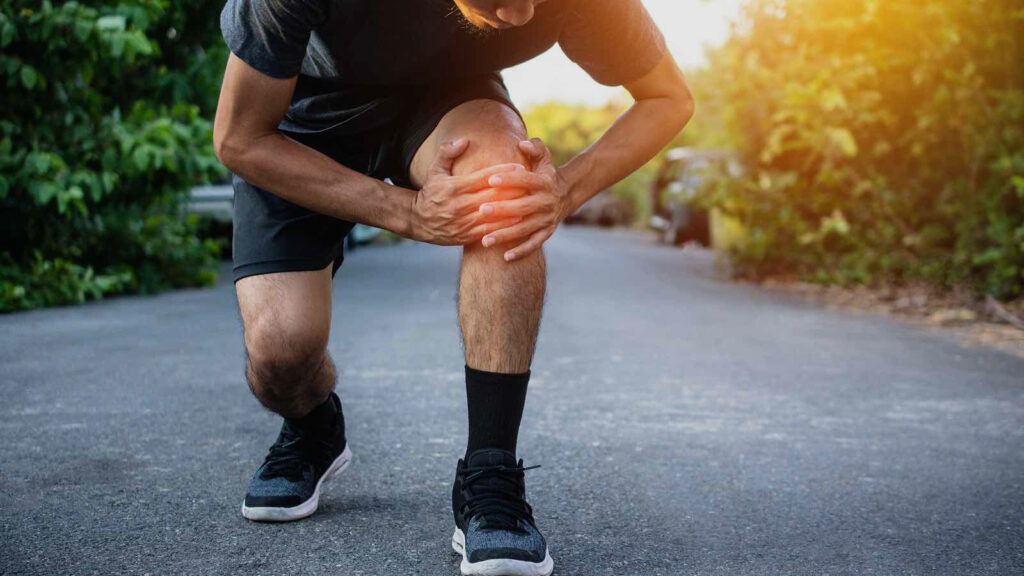
Introduction:
Knee pain is a common complaint, especially among older adults and those who are physically active. It can be caused by a variety of factors, including injuries, arthritis, and overuse. In this article, we’ll discuss the most common causes of knee pain, as well as some effective treatments and exercises to alleviate the discomfort.
Symptoms of Knee Pain?
The common symptoms of knee problems include:
Pain and stiffness
Swelling and redness
Warmth to the touch
Instability and difficulty in fully extending the knee.
Grinding or popping sounds when moving the knee joint.
Causes of Knee Pain:
- Injuries: Knee injuries are one of the most common causes of knee pain, and they can be caused by a variety of activities, such as sports, falls, and accidents. Some common knee injuries include ACL tears, meniscus tears, and patellar tendonitis.
- Arthritis: Knee arthritis is another common cause of knee pain, especially in older adults. The most common types of knee arthritis are osteoarthritis and rheumatoid arthritis.
- Overuse: Overuse of the knee joint can also cause pain and discomfort. This can occur from repetitive activities such as running or jumping.
- Osteoarthritis also referred to as degenerative arthritis, is a prevalent condition that arises due to the gradual deterioration of knee cartilage caused by aging and excessive use.
- Gout is a type of arthritis that typically affects the big toe but can also impact the knee joints. It occurs when uric acid accumulates in the knee joints.
Knee Pain Treatments:
Knee pain is a common issue that can affect individuals of all ages, often caused by various factors such as injury, arthritis, or overuse. Knee pain treatment aims to determine the underlying cause of the pain and manage it through various methods, including medication, physical therapy, and surgery if necessary.
A comprehensive approach to knee pain treatment involves a team of experienced doctors and therapists who work together to provide personalized care based on each patient’s unique needs. Advanced diagnostic techniques help identify the root cause of the pain and allow for a customized treatment plan.
Some knee pain treatments that may be prescribed include:
- Medication: Medications such as pain relievers and anti-inflammatory drugs may be prescribed to manage pain and inflammation.
- Physical therapy: Physical therapists can work with patients to improve strength, flexibility, and range of motion in the knee. They may also use modalities such as ultrasound or electrical stimulation to reduce pain and swelling.
- Injections: A variety of injections such as corticosteroids and hyaluronic acid can be used to reduce inflammation and improve joint function.
- Surgery: In cases where conservative treatments are not effective, surgery may be recommended to repair or replace damaged knee joints.
How can one prevent knee pain?
Knee pain can be prevented or controlled by taking some precautionary measures. These measures can also help in avoiding any further injuries. Here are some suggestions:
- Maintain a healthy weight to prevent putting extra pressure on your knees. Condition your body before participating in sports to prevent knee injuries. You may seek guidance from a professional trainer to avoid severe injuries.
- Strengthen your muscles to prevent knee strain caused by weak muscles. Focus on increasing body flexibility through stretching exercises.
- For patients with osteoarthritis, it is advisable to opt for low-impact exercises like swimming or water aerobics instead of running or jogging. High-impact exercises can worsen knee pain.
Conclusion
Knee pain is a common issue that can be caused by various factors such as injuries, arthritis, and overuse. It can lead to discomfort, stiffness, and limited mobility. To treat knee pain, a comprehensive approach involving medication, physical therapy, injections, or surgery may be recommended based on the underlying cause. It is crucial to maintain a healthy weight, condition the body, and strengthen the muscles to prevent knee strain caused by weak muscles. For patients with osteoarthritis, low-impact exercises like swimming or water aerobics are recommended to avoid worsening knee pain. If you are experiencing knee pain, it is essential to seek professional medical help to identify the root cause and develop an effective treatment plan.




